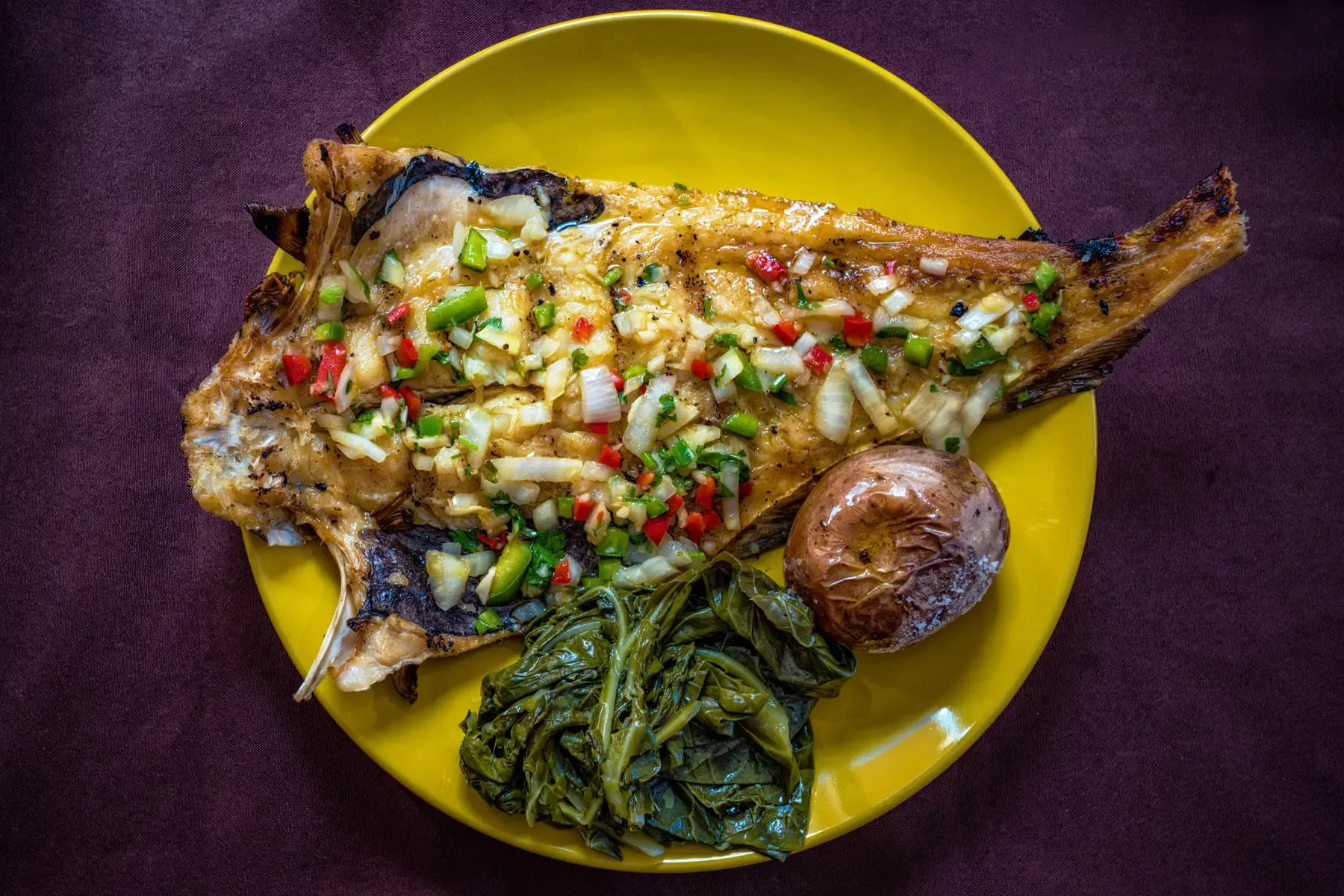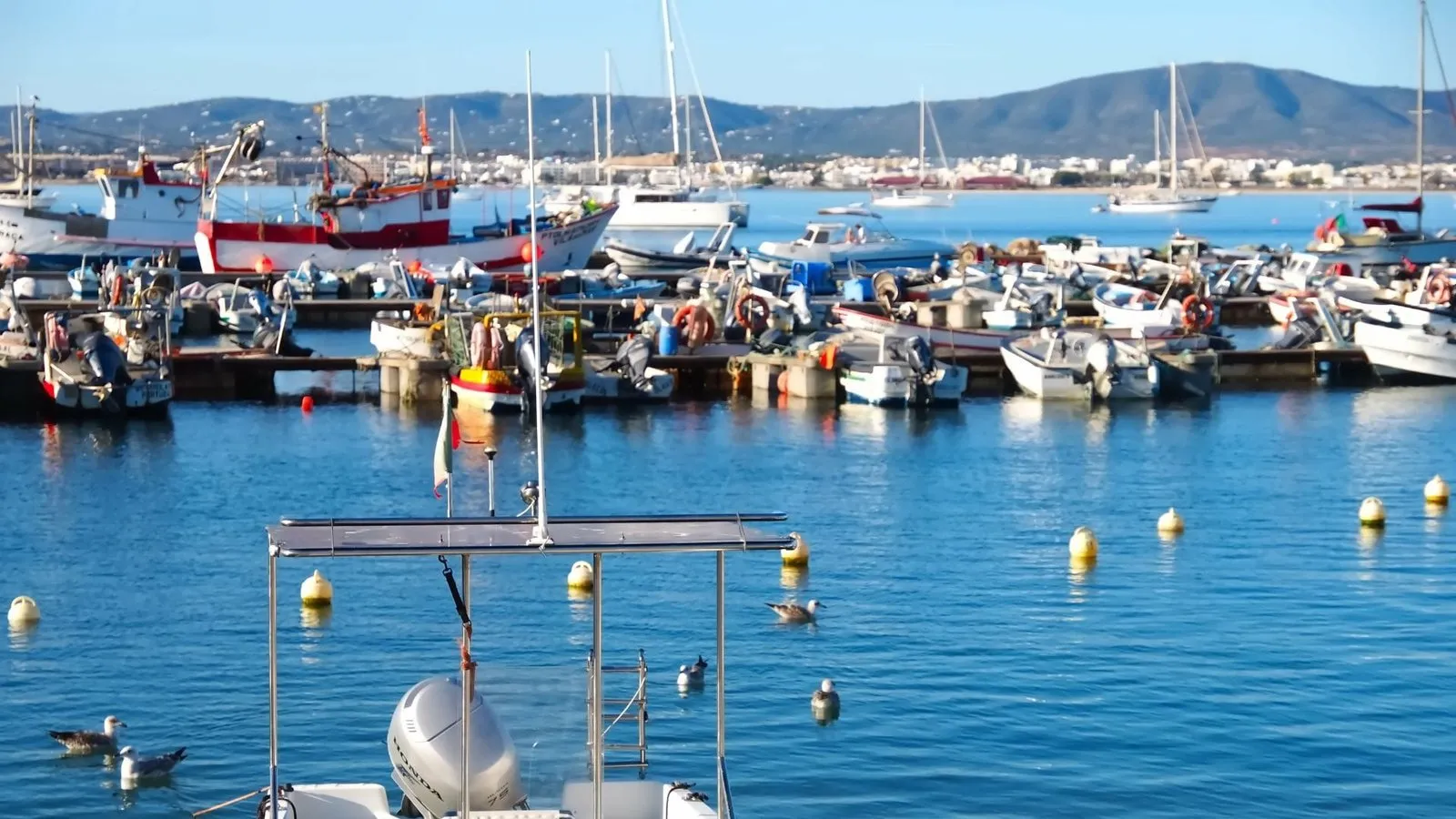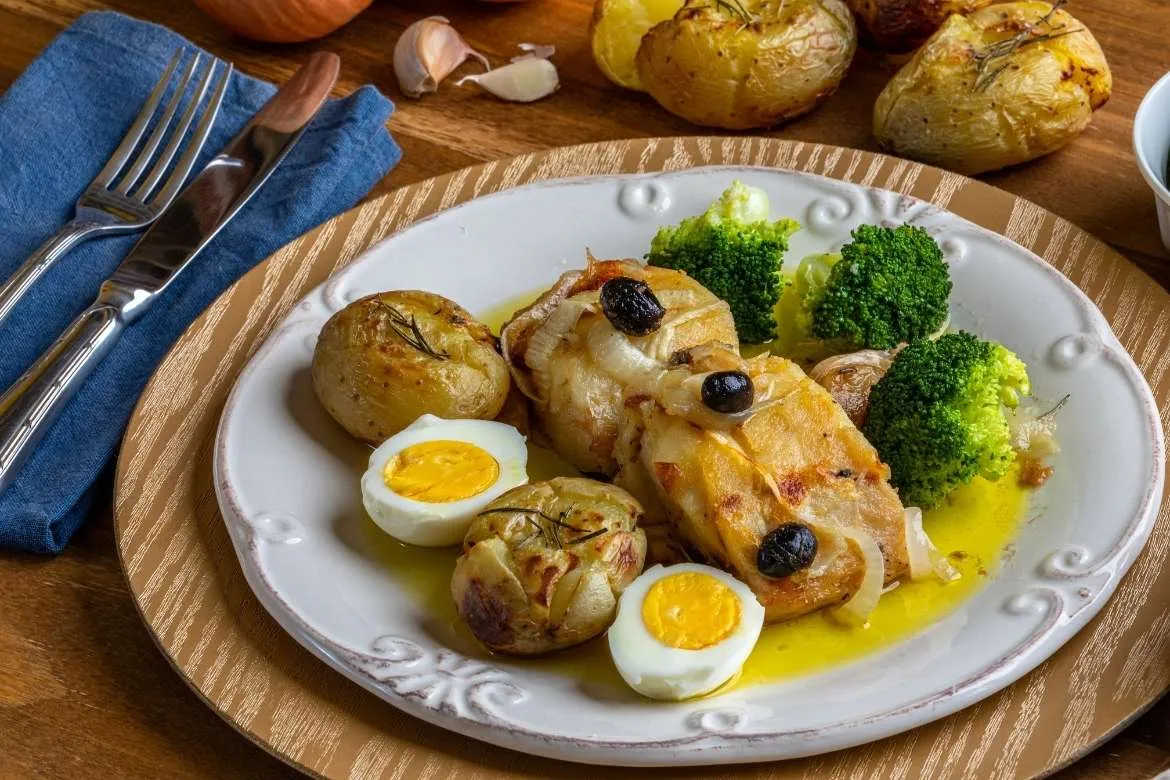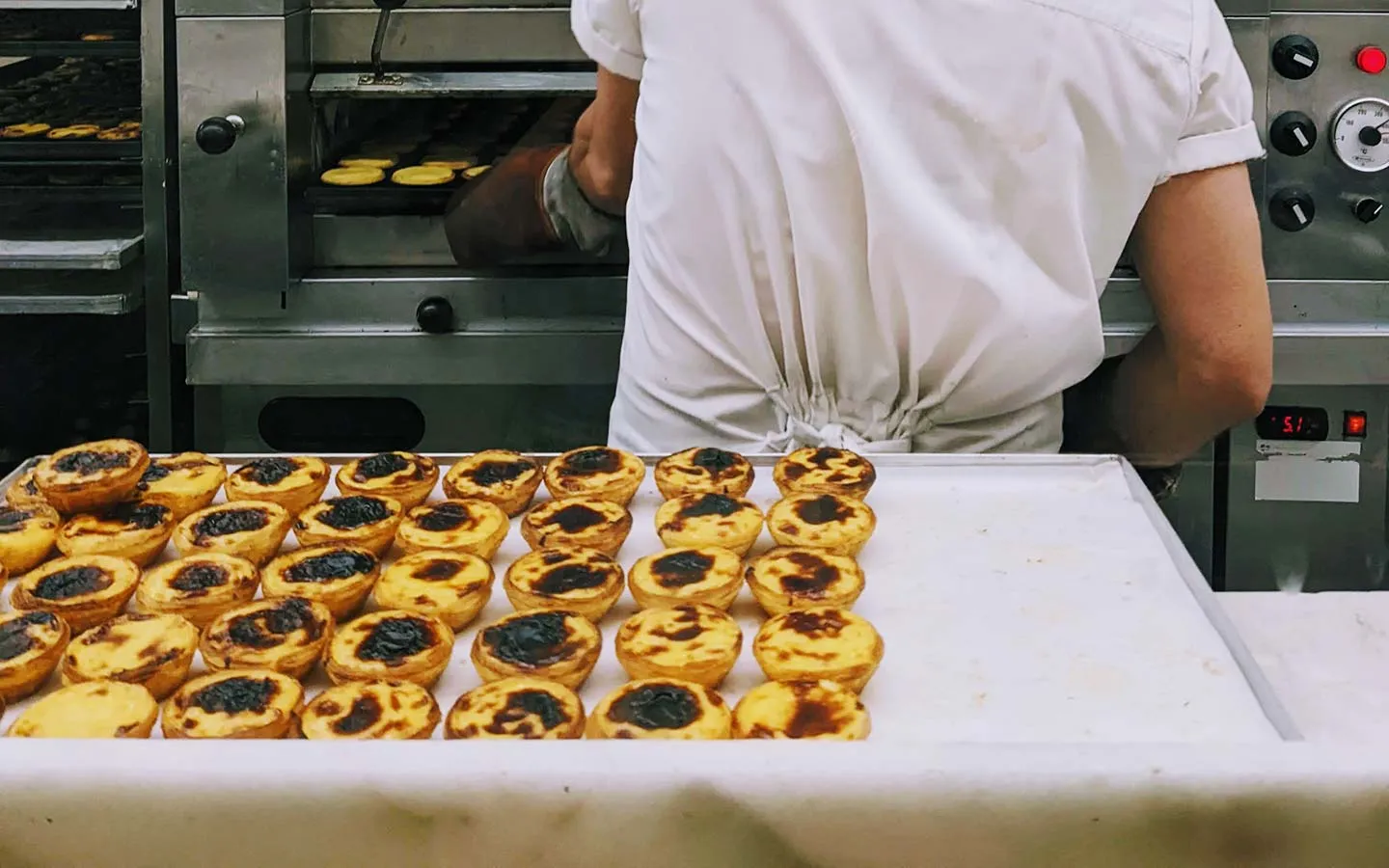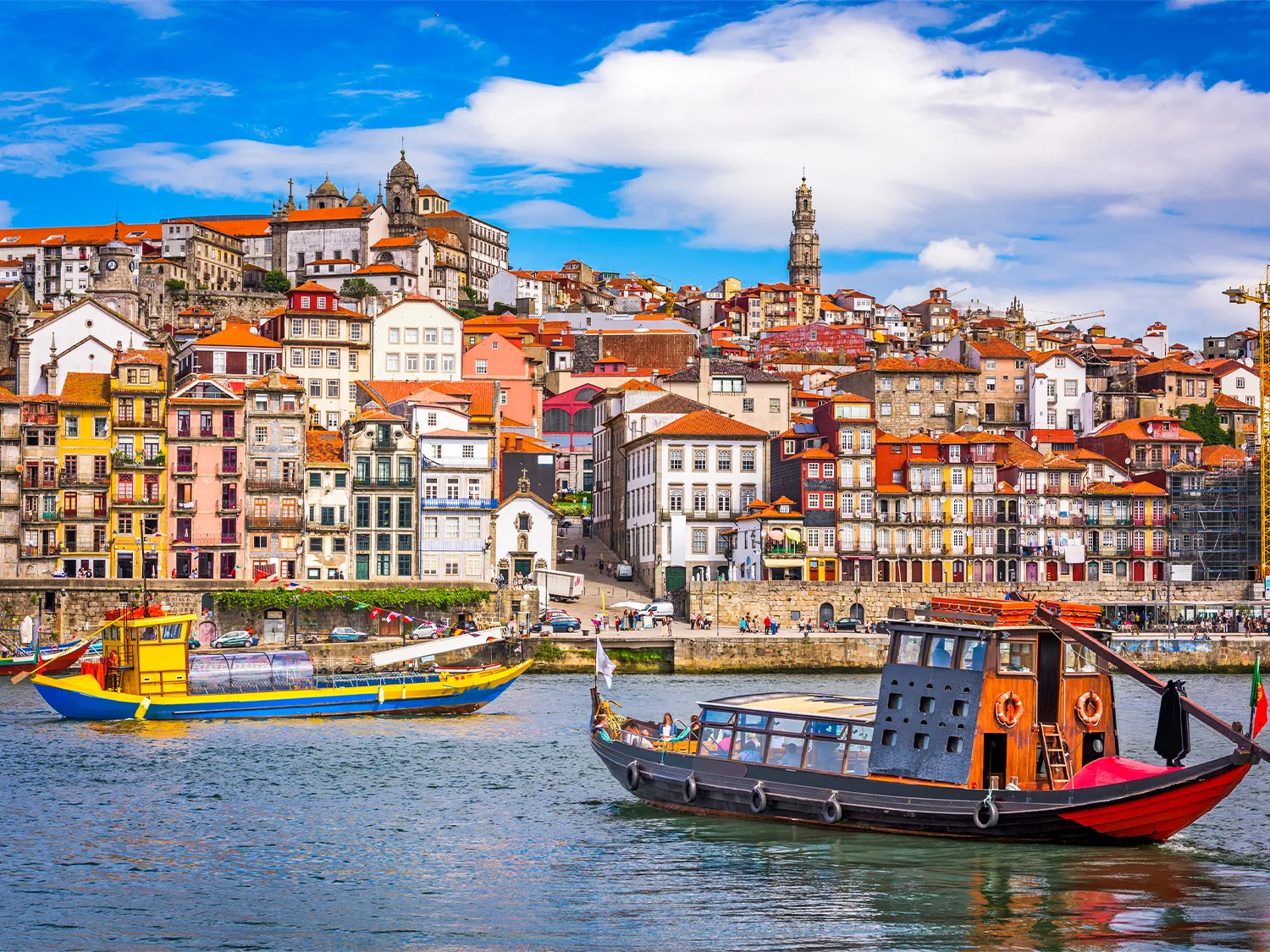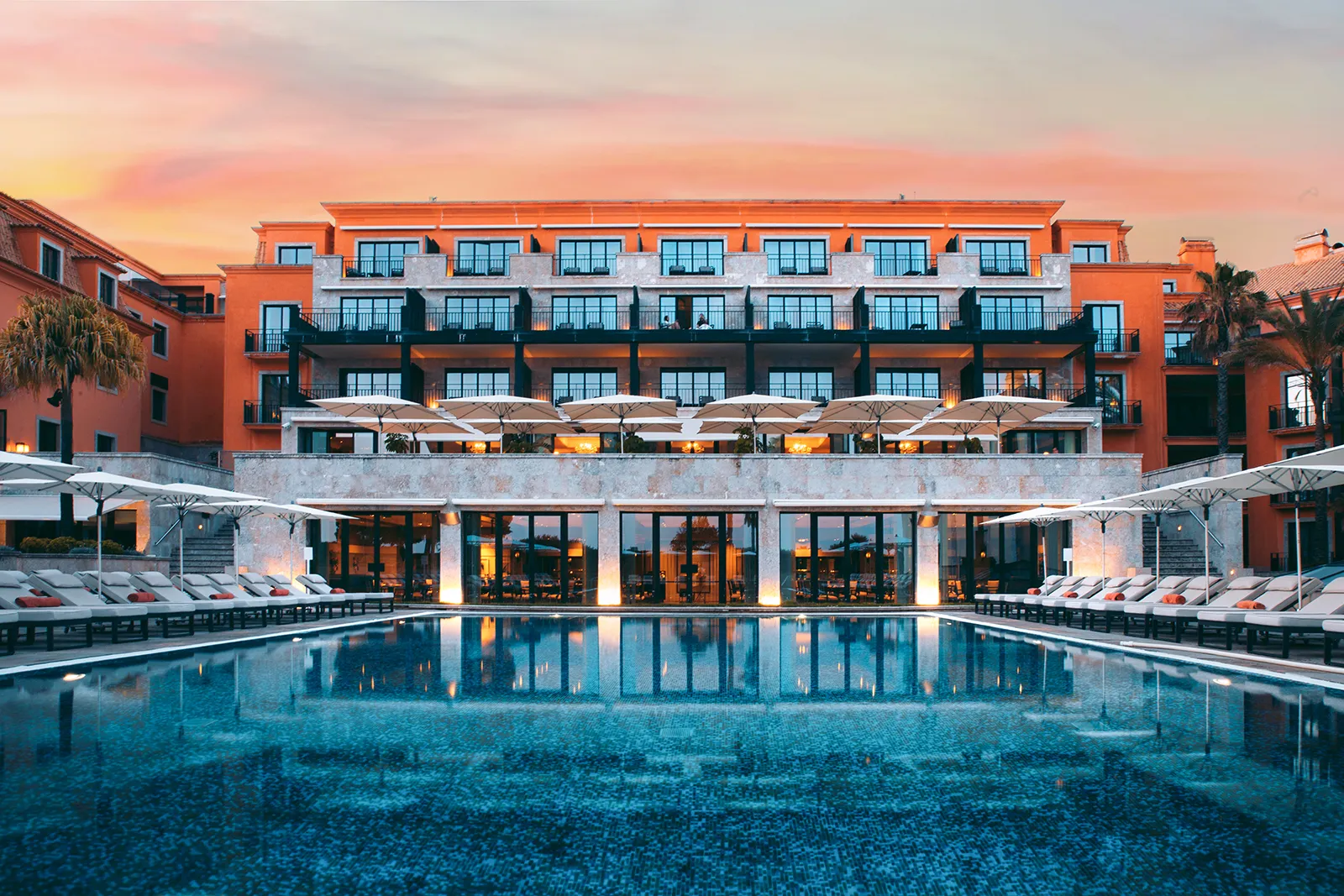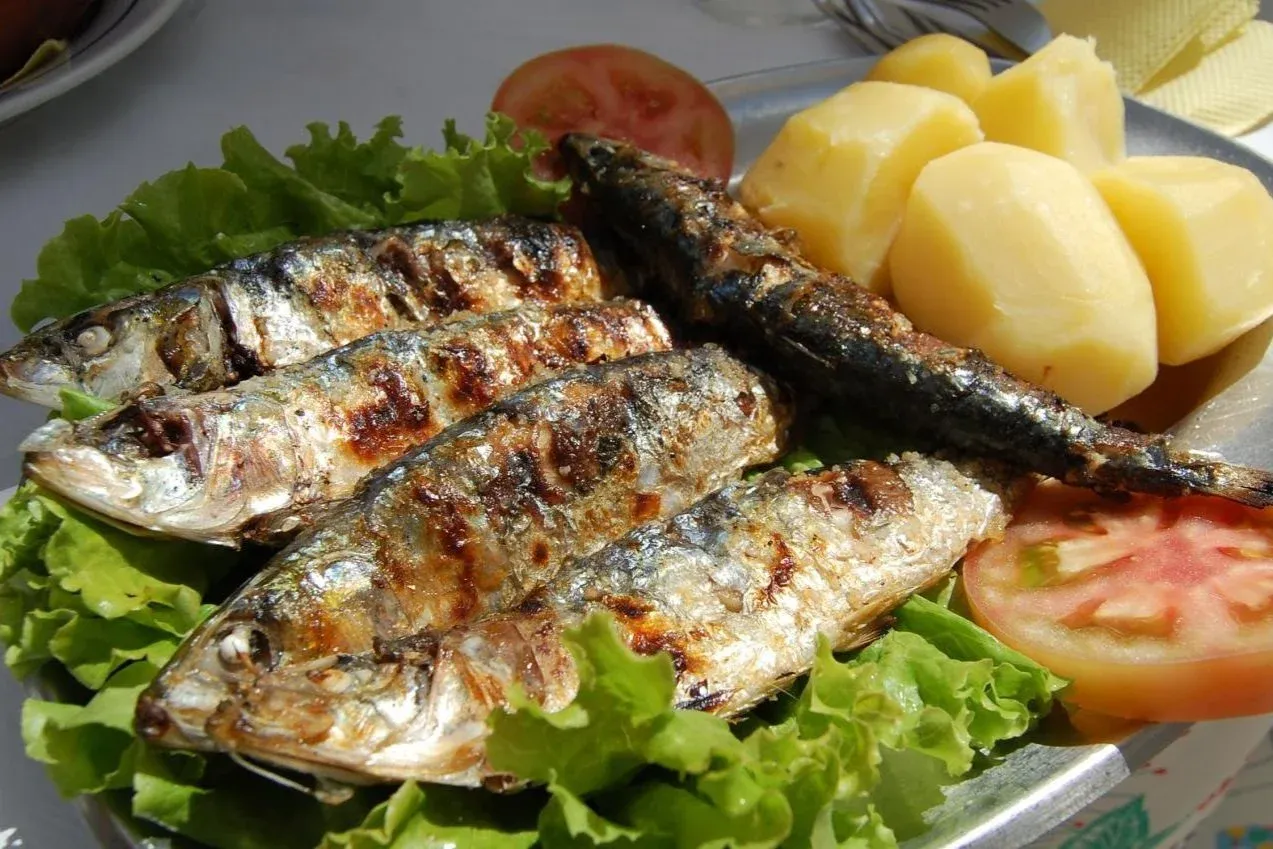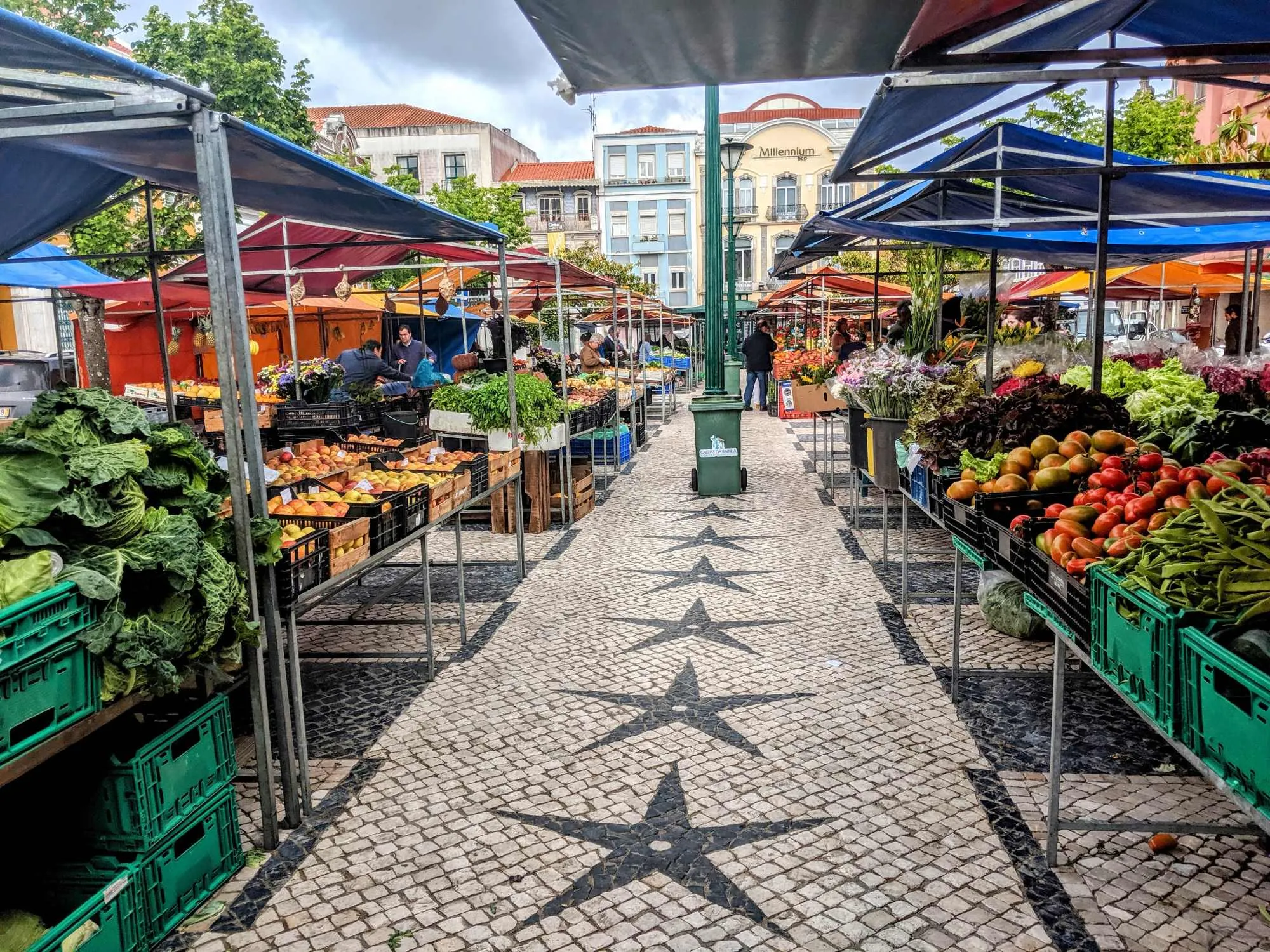The authentic Portugal food scene completely redefined my understanding of European cuisine the moment I bit into a simple pork sandwich at a tiny Porto tasca. That bifana, costing just a couple of euros, opened my eyes to a culinary tradition that doesn’t shout for attention but sings with robust, genuine flavors. After spending over a decade exploring Portugal’s diverse food landscape, I’ve discovered that this country’s cuisine represents everything I love about authentic travel dining: humble ingredients elevated by time-honored techniques, deep regional identity, and an unapologetic focus on pure taste. This insider’s guide will take you beyond tourist traps to discover the true soul of Portugal food, from iconic national dishes to hyper-regional specialties that tell the story of this remarkable country’s diverse landscapes and rich culinary heritage.
The Soul of Portuguese Cuisine: Land, Sea, and History
The story of Portugal food reflects three fundamental forces that shaped this fascinating culinary tradition. The vast Atlantic Ocean provides an incredible bounty of seafood, making Portugal the European country with the highest per-capita fish consumption. This maritime heritage balances perfectly with rustic, agricultural traditions from the interior regions, creating hearty comfort foods built on pork, bread, and exceptional olive oil.
What makes Portuguese cuisine truly special is its global influence from the Age of Discovery. Portuguese explorers didn’t just bring back gold—they returned with an entire international pantry. Piri-piri peppers from Africa and the Americas, along with spices like cumin and cloves, became integral to the national palate. The Romans introduced olive cultivation and winemaking, while centuries of Moorish rule left an indelible mark with ingredients like rice, lemons, almonds, and the crucial herb coriander that defines southern Portuguese cooking.
This rich history created a cuisine where eating becomes an act of tasting centuries of cultural exchange. The spirit of sharing shines through petiscos—Portugal’s answer to tapas—which aren’t just small plates but a way of life that invites you to slow down, socialize, and sample the country’s incredible culinary diversity.
Must-Try Portugal Food: 5 Essential Dishes
Bacalhau (Salt Cod): A National Obsession
Bacalhau represents more than just fish in Portuguese culture—it’s a national institution. Portuguese cooks famously claim there are over 365 ways to prepare this dried and salted cod, one for every day of the year. Before cooking, the cod requires 24-48 hours of soaking to rehydrate and remove excess salt, creating a unique firm texture that’s far more interesting than fresh cod.
My first encounter with properly prepared bacalhau happened at a family-run tasca in Lisbon’s Alfama district. The Bacalhau à Brás that arrived was absolute perfection: delicate flakes of savory cod intertwined with silky onions, crispy matchstick potatoes, and creamy scrambled eggs, topped with briny black olives. Every texture and flavor worked in perfect harmony.
The essential variations include Bacalhau com Natas (baked in a cream sauce), Bacalhau à Lagareiro (roasted with olive oil and crushed potatoes), and Pastéis de Bacalhau (crispy cod fritters perfect for sharing). For authentic experiences in Lisbon, visit dedicated institutions like Laurentina – o Rei do Bacalhau or A Casa do Bacalhau.
Sardinhas Assadas (Grilled Sardines): Summer’s Signature Dish
These beautifully simple grilled sardines capture the essence of a Portuguese summer. Whole fresh sardines are coated in coarse sea salt and grilled over hot charcoal until the skin blisters and crisps perfectly. The season runs from May to October when sardines are at their fattest and most flavorful.
Walking through Lisbon’s Alfama during the Santos Populares festival in June provides an unforgettable sensory experience. The entire neighborhood becomes a street party filled with the intoxicating smoke of grilling sardines. A local handed me three glistening sardines on thick cornbread (broa) with a simple instruction: “No fork.” Eating them with my hands, tasting the rich oily fish against the dense, slightly sweet bread, created one of my most memorable cultural immersion moments.
For the ultimate experience, visit Lisbon in June for the festival atmosphere. Portimão in the Algarve hosts an annual sardine festival and even features a sardine museum. Restaurante Casa Pires in coastal Nazaré serves exceptional restaurant-quality grilled sardines.
Francesinha: Porto’s Legendary Sandwich
The francesinha isn’t just a sandwich—it’s a culinary event that defines Porto’s hearty food culture. This monstrously indulgent creation starts with thick bread layered with ham, steak, and multiple sausage varieties (linguiça, chouriço). The entire construction is then buried under melted cheese, drowned in a rich, spicy tomato-beer sauce, and often crowned with a fried egg. French fries are the essential accompaniment to this massive feast.
My first francesinha experience at the famous Cafe Santiago in Porto was both intimidating and incredible. The sheer scale demanded respect, but that first bite delivered a symphony of savory, meaty, cheesy, and spicy flavors that was absolutely staggering. It’s a genuinely heavy, nap-inducing meal that leaves zero room for dessert—and serves as a true rite of passage for any food lover visiting Porto.
This is strictly a Porto specialty, and locals warn that versions found elsewhere rarely measure up. The top spots include Cafe Santiago, A Regaleira (which claims to have invented the dish), and Yuko for the most authentic experiences.
Cataplana de Marisco: The Algarve’s Seafood Spectacular
This magnificent seafood stew takes its name from the unique clam-shaped copper pot that is both a cooking vessel and a serving centerpiece. The two halves lock together, trapping steam and intensifying the incredible flavors of clams, shrimp, mussels, and meaty fish simmered in white wine, tomatoes, peppers, and fresh herbs.
I learned to appreciate this dish properly by taking a cataplana cooking class in Faro. The experience began at the local market, where our chef selected ingredients like an artist: glistening clams, massive tiger prawns, and thick monkfish fillets. The most theatrical moment came when the chef unclamped and opened the cataplana at our table, releasing a massive plume of briny, garlicky, cilantro-scented steam that created pure culinary theater.
This dish reaches its pinnacle in its Algarve homeland where the seafood is freshest. Mato a Vista in Albufeira has earned particular recognition for its excellent Monkfish Cataplana preparation.
Pastel de Nata: Portugal’s Sweet Ambassador
Portugal’s most famous culinary export consists of an incredibly flaky puff pastry filled with creamy egg custard that gets beautifully blistered and caramelized during baking. Its history traces back to Catholic monks at Lisbon’s Jerónimos Monastery in the 18th century.
The proper ritual involves eating these tarts warm from the oven with cinnamon and powdered sugar available for dusting. I encourage every visitor to conduct their own taste test between the original source, Pastéis de Belém, and the popular competitor Manteigaria. Pastéis de Belém offers a slightly thicker, more rustic crust, while Manteigaria delivers a shatteringly crisp and delicate version.
The original Fábrica de Pastéis de Belém in Lisbon remains the most famous source, but Manteigaria’s multiple locations in Lisbon and Porto often win local preference for their consistency and exceptional crust quality.
A Taste of the Regions: Portugal Food Specialties
Lisbon: Historic Flavors and Coastal Classics
Lisbon serves as Portugal’s vibrant culinary heart, where centuries-old traditions coexist with modern dining innovation. The city’s location on the Tagus River makes seafood central to the local identity. Summer transforms the historic Alfama district into an open-air barbecue paradise, with sardine-scented air filling the narrow streets.
Classic Lisbon dishes include the perfect Amêijoas à Bulhão Pato (clams in garlic and cilantro) and the iconic Bacalhau à Brás. The legendary Cervejaria Ramiro provides the gold standard for clam preparation in a loud, chaotic, and perpetually packed atmosphere that epitomizes Portuguese dining culture.
For modern food experiences, the Time Out Market offers curated selections from top chefs under one roof, providing an excellent overview of Portuguese cuisine in a lively food hall setting.
Porto and the Douro Valley: Comfort Food and World-Class Wine
Porto represents the soul of Portuguese comfort food with robust, satisfying dishes that reflect the city’s working-class heritage. Beyond the famous francesinha, Porto celebrates unique items like the Cachorrinho (a grilled hot dog in a crispy baguette) and traditional Tripas à moda do Porto (tripe stew).
The nearby Douro Valley produces world-famous Port wine and regional specialties like Arroz de Pato (duck rice), a rich baked rice dish that showcases the area’s agricultural abundance.
A visit to the Port lodges in Vila Nova de Gaia for tastings and tours provides essential cultural education. Many major houses like Graham’s, Taylor’s, and Sandeman offer excellent experiences, with Vinum restaurant at Graham’s lodge providing outstanding food with panoramic views of Porto.
Algarve: Sun-Kissed Seafood Traditions
The sun-drenched southern coast celebrates the ocean’s bounty with fresh, vibrant cuisine deeply connected to its fishing heritage. Beyond the signature cataplana, regional specialties include Xerém com Conquilhas (creamy cornmeal with small clams) and the region’s exceptional Frango Piri-Piri prepared in local churrasqueiras.
The Algarve’s Mediterranean-influenced climate and coastal location create the perfect conditions for outdoor grilling and seafood preparation that define the local culinary identity.
Alentejo: Rustic Heartland Cuisine
Portugal’s agricultural heartland produces earthy, deeply flavorful cuisine built on the holy trinity of pork, bread, and exceptional olive oil. This region celebrates porco preto (Iberian black pig) that feeds on acorns, creating incredibly nutty and flavorful meat.
Signature dishes include Carne de Porco à Alentejana (a surprising surf-and-turf combination of pork and clams) and Açorda (a satisfying bread soup with garlic, cilantro, and olive oil, often topped with a poached egg). The region also produces Portugal’s most powerful, full-bodied red wines, which perfectly complement the robust local cuisine.
Immersive Food Experiences in Portugal
Food Tours That Unlock Authentic Flavors
Well-chosen food tours eliminate the risk of disappointing tourist-trap meals while providing local insider access to family-run establishments you’d never find independently. Taste of Lisboa offers excellent food and cultural walks through the historic Mouraria neighborhood, a district rich in authentic flavors that many tourists miss.
The “10 Tastings” tours available in both Lisbon and Porto provide a comprehensive, delicious introduction to each city’s culinary highlights in just a few hours. Porto tours that include visits to the historic Bolhão Market provide valuable context for the dishes you’ll taste throughout your journey.
Hands-On Cooking Classes with Local Experts
Learning to cook Portuguese dishes yourself creates the deepest appreciation for the cuisine’s techniques and cultural significance. The best classes follow a “market-to-table” format that begins with guided ingredient selection at local markets.
My favorite Porto experience with Canto Cooking started at the renovated Mercado do Bolhão, where our chef helped us select fresh, seasonal ingredients while sharing stories about the vendors and produce. Back in the kitchen, we learned to prepare a complete petiscos meal enjoyed with local wines, leaving with both satisfied appetites and practical skills to recreate the experience at home.
Essential Market Visits for Food Lovers
Portugal’s vibrant markets serve as community hubs, offering a complete sensory experience that reveals the local food culture. Lisbon’s Time Out Market combines traditional vendors around the perimeter with a modern gourmet food hall featuring dishes from the city’s top chefs.
For more traditional experiences, Lisbon’s Mercado de Campo de Ourique provides an authentic neighborhood atmosphere where locals conduct their daily shopping and gather for lunch at small central food stalls.
Porto’s beautifully renovated Mercado do Bolhão offers the perfect traditional market experience, with vendors selling fresh fruits, vegetables, cheeses, meats, and fish alongside small cafes and bakeries that showcase Northern Portuguese ingredients and preparations.
Portugal Food Culture: Dining Like a Local
Understanding Portuguese Breakfast Traditions
American travelers expecting a hearty breakfast plate might be surprised by Portuguese morning simplicity. The typical pequeno-almoço consists of coffee and bread in various forms. Coffee usually means a milky preparation like meia de leite (half coffee, half milk in a cup) or a galão (more milk than coffee in a tall glass).
Bread accompanies this as a torrada (thick buttered toast) or simple sandwiches with ham (fiambre) and cheese (queijo). Pastries are perfectly acceptable morning options, with a warm pastel de nata or pão de deus (a soft, sweet coconut-topped brioche) creating a quintessential Portuguese breakfast experience.
Tipping Guidelines from a Frequent Visitor
Portugal lacks the strong, obligatory tipping culture found in the United States. Service workers receive a full minimum wage and don’t depend on tips for their living income, making tipping appreciated but never expected.
In casual cafes and bars, simply round up the bill to the nearest euro or leave small change. Restaurant tipping ranges from 5-10% for excellent service, particularly in tourist areas or high-end establishments. Always leave cash tips directly for the server, as credit card tips may not reach staff members.
Safe Drinking Water Throughout Portugal
Tap water throughout Portugal meets strict European Union safety standards and is completely safe for consumption. Many locals and restaurants default to bottled water due to taste preferences rather than safety concerns, as the tap water can be mineral-heavy and chlorine-treated, particularly in coastal and southern regions.
Requesting tap water (água da torneira) in restaurants is perfectly acceptable, and establishments will happily provide it in a jar or bottle for guests who prefer this option.
Your Portugal Food Adventure Awaits
The world of Portugal food represents one of Europe’s most rewarding and authentic culinary adventures, combining centuries of tradition with incredible regional diversity and an unwavering commitment to quality ingredients. From that life-changing bifana in a humble Porto tasca to the theatrical drama of a seafood cataplana in the Algarve, every meal tells the story of a country shaped by the ocean, enriched by global exploration, and grounded in the simple pleasure of sharing excellent food with good company. The real magic happens when you venture beyond tourist areas to discover family-run establishments where recipes are passed between generations and every dish reflects a genuine pride in Portuguese culinary heritage. Your own unforgettable journey through the flavors of Portugal awaits—pack your appetite and prepare for a culinary experience that will redefine your understanding of European cuisine.
Read more:
